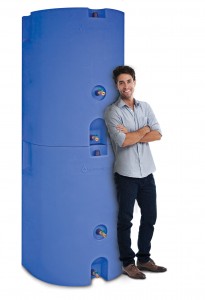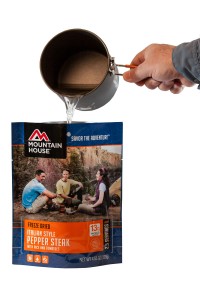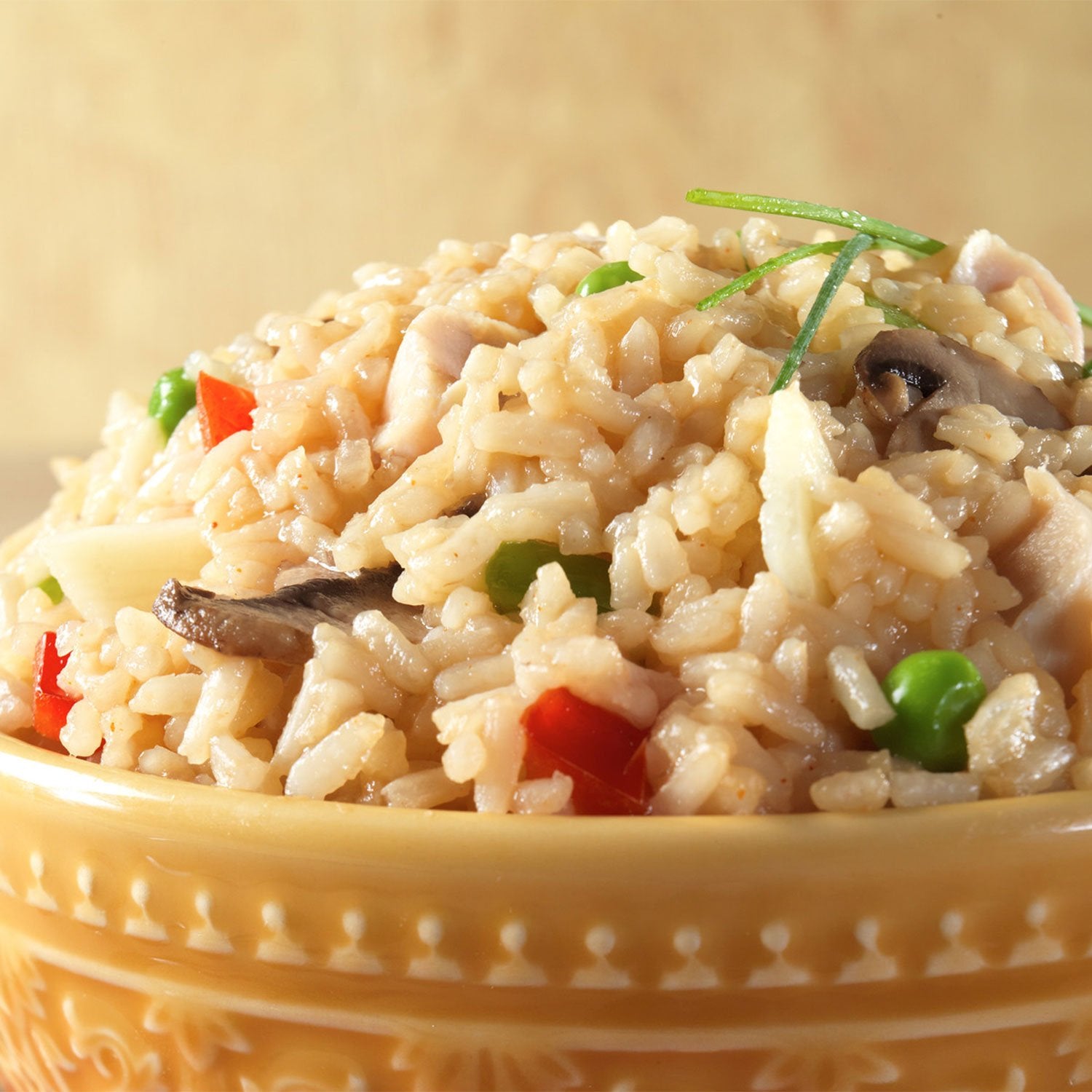If there’s an emergency situation going on around you (hurricane, power outage, soccer practice, etc.), taking the time to create good, wholesome meals can be a daunting task. Fortunately, just-add-water meals are here to save you. Just-Add-Water Meals
Just-add-water meals are dehydrated of freeze-dried meals that are already prepared – all you need to do is add water and voila! You’ve got yourself a delicious, home-cooked meal in minutes. That right there is reason enough to have these types of meals on hand. There are also many different varieties, including Chicken Teriyaki with Rice, Pasta Primavera, Creamy Potato Soup, and many more options. Having these on hand will not only make it easy to prepare good meals, but you can also add variety to your daily diet. Eating the same thing day after day can get tiring very quickly, making it hard to even want to eat. Having a wide variety of entrées will keep your meals fresh and exciting for a long time. Water for Your Meals One of the main reasons we store water is so we can remain hydrated. After all, we need water to stay healthy, strong, and to be able to function properly. Similarly, without food, our bodies will likewise be weak. But what does water have to do with food? Everything. Water is an essential part in preparing delicious emergency meals. Think about it, how much of your emergency food consists of dehydrated of freeze-dried entrées and pre-cooked meals? Chances are you have at least some food that fits that category. So how do you plan on preparing it in an emergency? That’s where water comes into play. Water storage is more than just for drinking (although that right there is also vital). Without water, cooking, baking, and preparing your dehydrated and freeze-dried meals will be quite difficult indeed. So how can you make sure you have enough water to prepare your food as well as stay hydrated and sanitary? You store it. Storing Water Storing water is an important part of any emergency preparedness plan. After all, it’s recommended that a household’s water storage should consist of at least one gallon of water per day per person. This only covers hydration and light sanitation, however. So, if you plan on rehydrating your food, you will want to store more water than that. Each can of just-add-water meals will tell you how much water you’ll need for each serving, as well as how many servings are inside the can. This will help you gauge how much extra water you’ll need to store. How to Store Water  There are a few ways that will work for storing water. One of the most effective is through water barrels and reserves. Depending on the room you have, you could go with a smaller 15-gallon water barrel, or so much as a 320-gallon water reserve. Of course, there are other sizes in between if 15-gallons is too small but 320-gallons is too much. Another method is through pop (or soda, depending on where you’re from) bottles. Make sure you wash them out thoroughly before adding water. Plastic jugs or cardboard cartons that contained milk or fruit juice are not recommended for storing water, due to the nature of the plastic and cardboard holding on to milk protein and fruit sugars. No matter how hard you scrub or clean, these substances can’t be adequately removed, giving bacteria an easier time to grow when water is stored in them. Now that you have water, let’s talk for a moment about how to rehydrate (or reconstitute) your just-add-water meals. Reconstituting Dehydrated Food If you’re an avid eater of dehydrated food (beef jerky, anyone?), then you might be interested to know that it doesn’t all have to be eaten that way. However, the process of rehydrating dehydrated food differs depending on the food in question. Some foods, such as sauces or dips, just need cold water to be added until your food reaches its desired consistency. Other food, however, takes longer and needs more than just cold water. Meat is an example of such foods. When reconstituting meat, you will need to add your meat to boiling water and let cook for an extended period of time. Depending on the thickness and type of meat, for example, it could take anywhere from 30 minutes to an hour. Reconstituting Freeze-Dried Food
There are a few ways that will work for storing water. One of the most effective is through water barrels and reserves. Depending on the room you have, you could go with a smaller 15-gallon water barrel, or so much as a 320-gallon water reserve. Of course, there are other sizes in between if 15-gallons is too small but 320-gallons is too much. Another method is through pop (or soda, depending on where you’re from) bottles. Make sure you wash them out thoroughly before adding water. Plastic jugs or cardboard cartons that contained milk or fruit juice are not recommended for storing water, due to the nature of the plastic and cardboard holding on to milk protein and fruit sugars. No matter how hard you scrub or clean, these substances can’t be adequately removed, giving bacteria an easier time to grow when water is stored in them. Now that you have water, let’s talk for a moment about how to rehydrate (or reconstitute) your just-add-water meals. Reconstituting Dehydrated Food If you’re an avid eater of dehydrated food (beef jerky, anyone?), then you might be interested to know that it doesn’t all have to be eaten that way. However, the process of rehydrating dehydrated food differs depending on the food in question. Some foods, such as sauces or dips, just need cold water to be added until your food reaches its desired consistency. Other food, however, takes longer and needs more than just cold water. Meat is an example of such foods. When reconstituting meat, you will need to add your meat to boiling water and let cook for an extended period of time. Depending on the thickness and type of meat, for example, it could take anywhere from 30 minutes to an hour. Reconstituting Freeze-Dried Food  Freeze-dried food is much easier to reconstitute, and once rehydrated, it will revert back to its original shape, texture, and taste – just like it was the day it was freeze-dried. To revert your freeze-dried food back to its original design, all you need to do is place it in hot water and wait up to 10 minutes. It doesn’t need to be boiled, and again, it reverts back to how it was before it was freeze-dried. Water storage must not be forgotten when stocking up on emergency food, especially if that food consists of dehydrated or freeze-dried entrées. Be conscious of the types of food you’re storing and secure enough water to be able to prepare those foods, while still having enough for hydration and sanitation. How do you store water to use with your emergency food?
Freeze-dried food is much easier to reconstitute, and once rehydrated, it will revert back to its original shape, texture, and taste – just like it was the day it was freeze-dried. To revert your freeze-dried food back to its original design, all you need to do is place it in hot water and wait up to 10 minutes. It doesn’t need to be boiled, and again, it reverts back to how it was before it was freeze-dried. Water storage must not be forgotten when stocking up on emergency food, especially if that food consists of dehydrated or freeze-dried entrées. Be conscious of the types of food you’re storing and secure enough water to be able to prepare those foods, while still having enough for hydration and sanitation. How do you store water to use with your emergency food? 


3 comments
Ken
I think what John was asking is; if adding colloidal silver would have the same sanitising effect as the silver coins of old.
john schwartz
I’ve read that in the 1700’s ships crossing the seas would put a silver coin in their water barrels to keep the water fit to drink. Would a small amount to colliodal silver do the same /that is to kill or prevent bacterial growth?
Emergency Essentials
There are a number of articles that examine using silver for water purification, and according to them, it should work. Just be sure it’s not old circulated silver coins formerly used as currency, as they may not work as well.